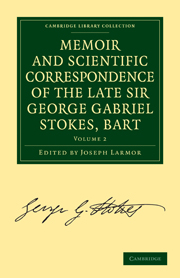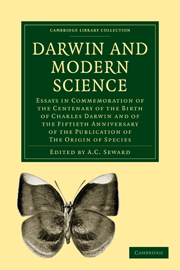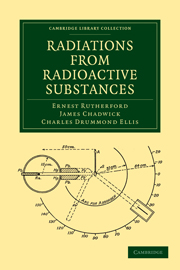Refine search
Actions for selected content:
10307 results in History of science: general interest
Administrative knowledge in a colonial context: Angola in the eighteenth century
-
- Journal:
- The British Journal for the History of Science / Volume 43 / Issue 4 / December 2010
- Published online by Cambridge University Press:
- 07 October 2010, pp. 539-556
- Print publication:
- December 2010
-
- Article
- Export citation
Locality and circulation in the Habsburg Empire: disputing the Carlsbad medical salt, 1763–1784
-
- Journal:
- The British Journal for the History of Science / Volume 43 / Issue 4 / December 2010
- Published online by Cambridge University Press:
- 07 October 2010, pp. 589-606
- Print publication:
- December 2010
-
- Article
- Export citation
Following insects around: tools and techniques of eighteenth-century natural history
-
- Journal:
- The British Journal for the History of Science / Volume 43 / Issue 4 / December 2010
- Published online by Cambridge University Press:
- 07 October 2010, pp. 573-588
- Print publication:
- December 2010
-
- Article
- Export citation

Memoir and Scientific Correspondence of the Late Sir George Gabriel Stokes, Bart.
- Selected and Arranged by Joseph Larmor
-
- Published online:
- 05 October 2010
- Print publication:
- 24 June 2010
- First published in:
- 1907
Circulating smallpox knowledge: Guatemalan doctors, Maya Indians and designing Spain's smallpox vaccination expedition, 1780–1803
-
- Journal:
- The British Journal for the History of Science / Volume 43 / Issue 4 / December 2010
- Published online by Cambridge University Press:
- 01 October 2010, pp. 519-537
- Print publication:
- December 2010
-
- Article
- Export citation
Introduction: circulation and locality in early modern science
-
- Journal:
- The British Journal for the History of Science / Volume 43 / Issue 4 / December 2010
- Published online by Cambridge University Press:
- 01 October 2010, pp. 513-517
- Print publication:
- December 2010
-
- Article
- Export citation
‘Sexual chemistry’ before the Pill: science, industry and chemical contraceptives, 1920–1960
-
- Journal:
- The British Journal for the History of Science / Volume 44 / Issue 2 / June 2011
- Published online by Cambridge University Press:
- 27 September 2010, pp. 245-274
- Print publication:
- June 2011
-
- Article
- Export citation
The biological precedents for medieval impetus theory and its Aristotelian character
-
- Journal:
- The British Journal for the History of Science / Volume 44 / Issue 1 / March 2011
- Published online by Cambridge University Press:
- 27 September 2010, pp. 1-27
- Print publication:
- March 2011
-
- Article
- Export citation

Darwin and Modern Science
- Essays in Commemoration of the Centenary of the Birth of Charles Darwin and of the Fiftieth Anniversary of the Publication of The Origin of Species
-
- Published online:
- 07 September 2010
- Print publication:
- 20 July 2009
- First published in:
- 1909

Memoir and Scientific Correspondence of the Late Sir George Gabriel Stokes, Bart.
- Selected and Arranged by Joseph Larmor
-
- Published online:
- 07 September 2010
- Print publication:
- 24 June 2010
- First published in:
- 1907

Radiations from Radioactive Substances
-
- Published online:
- 07 September 2010
- Print publication:
- 17 June 2010
- First published in:
- 1930

The Coming of Evolution
- The Story of a Great Revolution in Science
-
- Published online:
- 07 September 2010
- Print publication:
- 20 July 2009
- First published in:
- 1910
BJH volume 43 issue 3 Cover and Front matter
-
- Journal:
- The British Journal for the History of Science / Volume 43 / Issue 3 / September 2010
- Published online by Cambridge University Press:
- 08 September 2010, pp. f1-f2
- Print publication:
- September 2010
-
- Article
-
- You have access
- Export citation
Nicholas Jardine and Alain-Philippe Segonds, La Guerre des Astronomes: La Querelle au sujet de l'origine du système géo-héliocentrique à la fin du XVIe siècle. Volume 1: Introduction. Paris: Société d'Edition Les Belles Lettres, 2008. Pp. xxiv+290. ISBN 978-2-251-34513-0. €40.00 (paperback). - Nicholas Jardine and Alain-Philippe Segonds, La Guerre des Astronomes: La Querelle au sujet de l'origine du système géo-héliocentrique à la fin du XVIe siècle. Volume 2/1: LeContra Ursumde Jean Kepler, Introduction et textes préparatoires and Volume 2/2: LeContra Ursumde Jean Kepler, Édition critique, traduction et notes. Paris: Société d'Edition Les Belles Lettres, 2008. Pp. xx+222 and 223–634. ISBN 978-2-251-34512-3. €85.00 (paperback).
-
- Journal:
- The British Journal for the History of Science / Volume 43 / Issue 3 / September 2010
- Published online by Cambridge University Press:
- 08 September 2010, pp. 483-485
- Print publication:
- September 2010
-
- Article
- Export citation
Celina Fox, The Arts of Industry in the Age of Enlightenment. New Haven and London: Yale University Press, 2010. Pp. viii+576. ISBN 978-0-300-16042-0. £40.00 (hardback).
-
- Journal:
- The British Journal for the History of Science / Volume 43 / Issue 3 / September 2010
- Published online by Cambridge University Press:
- 08 September 2010, pp. 488-489
- Print publication:
- September 2010
-
- Article
- Export citation
Daniel Garber, Leibniz: Body, Substance, Monad. Oxford: Oxford University Press, 2009. Pp. xiii+428. ISBN 978-0-19-956664. £35.00 (hardback).
-
- Journal:
- The British Journal for the History of Science / Volume 43 / Issue 3 / September 2010
- Published online by Cambridge University Press:
- 08 September 2010, pp. 487-488
- Print publication:
- September 2010
-
- Article
- Export citation
Books received
-
- Journal:
- The British Journal for the History of Science / Volume 43 / Issue 3 / September 2010
- Published online by Cambridge University Press:
- 08 September 2010, pp. 509-512
- Print publication:
- September 2010
-
- Article
- Export citation
Graeme Gooday and James Sumner (eds.), By Whose Standards? Standardization, Stability and Uniformity in the History of Information and Electrical Technologies. History of Technology, Volume 28. Series editor Ian Inkster. London: Continuum, 2008. Pp. xiv+171. ISBN 978-0-8264-3875-1. £90.00 (hardback).
-
- Journal:
- The British Journal for the History of Science / Volume 43 / Issue 3 / September 2010
- Published online by Cambridge University Press:
- 08 September 2010, pp. 503-505
- Print publication:
- September 2010
-
- Article
- Export citation
Julie K. Brown, Health and Medicine on Display: International Expositions in the United States, 1876–1904. Cambridge, MA and London: The MIT Press, 2009. Pp. xi+326. ISBN 978-0-262-02657-4. £33.95 (hardback).
-
- Journal:
- The British Journal for the History of Science / Volume 43 / Issue 3 / September 2010
- Published online by Cambridge University Press:
- 08 September 2010, pp. 493-494
- Print publication:
- September 2010
-
- Article
- Export citation
Michael Hunter, Boyle: Between God and Science. New Haven and London: Yale University Press, 2009. Pp. xiii+366. ISBN 978-0-300-12381-4. £25.00 (hardback).
-
- Journal:
- The British Journal for the History of Science / Volume 43 / Issue 3 / September 2010
- Published online by Cambridge University Press:
- 08 September 2010, pp. 485-486
- Print publication:
- September 2010
-
- Article
- Export citation
